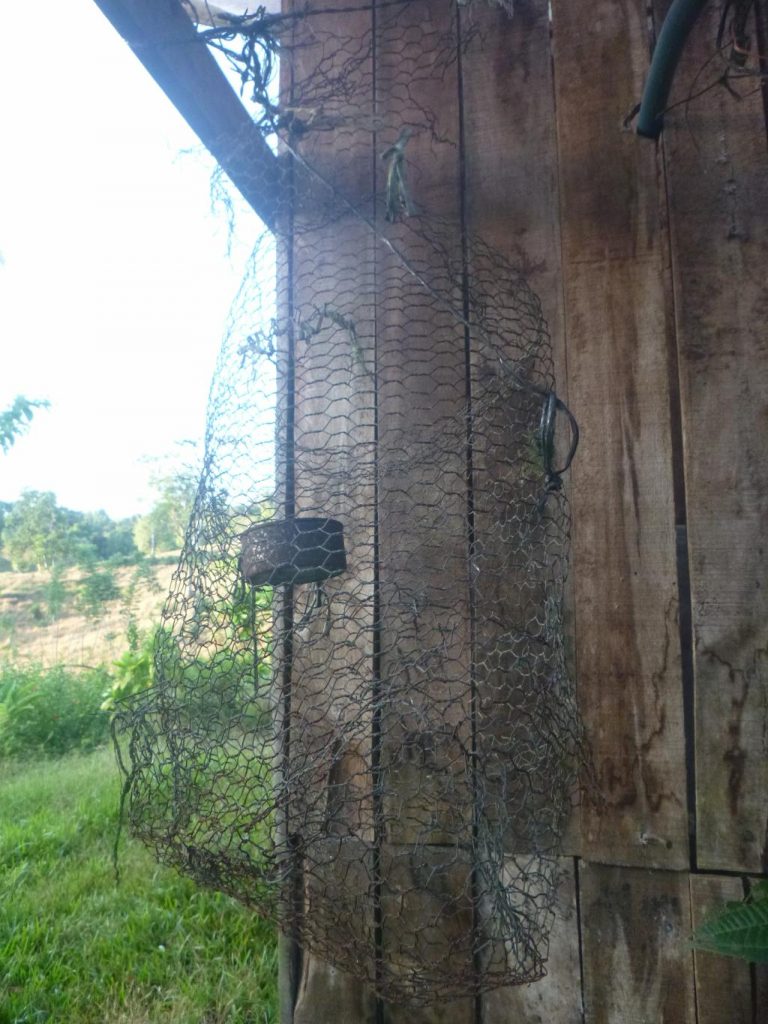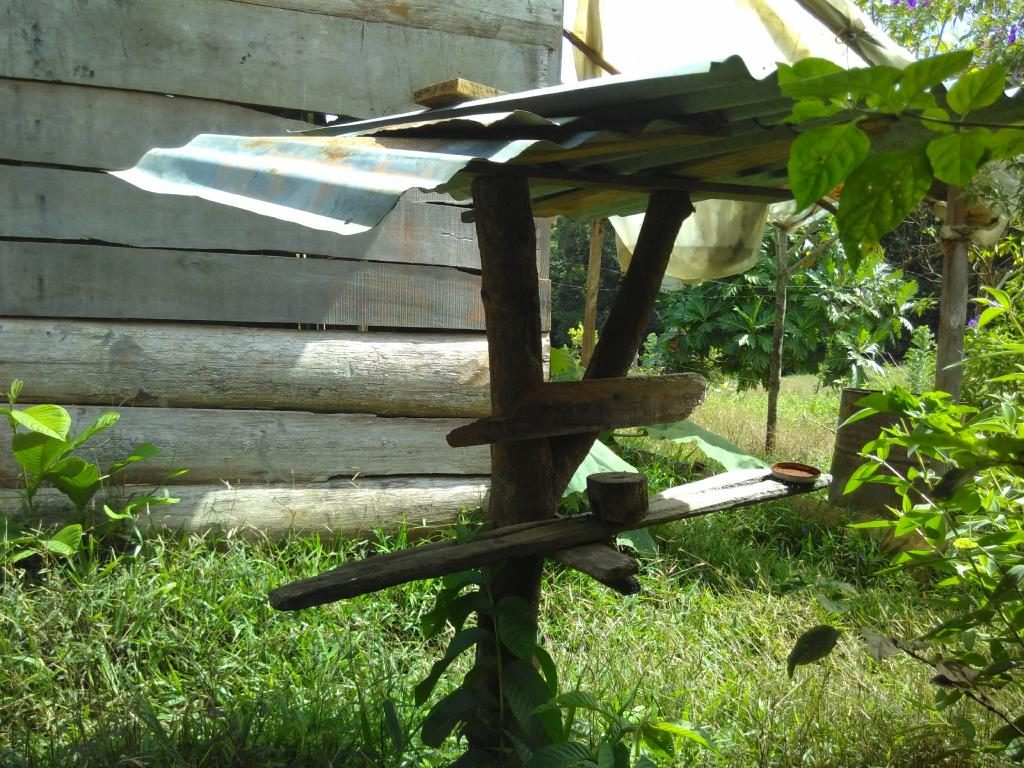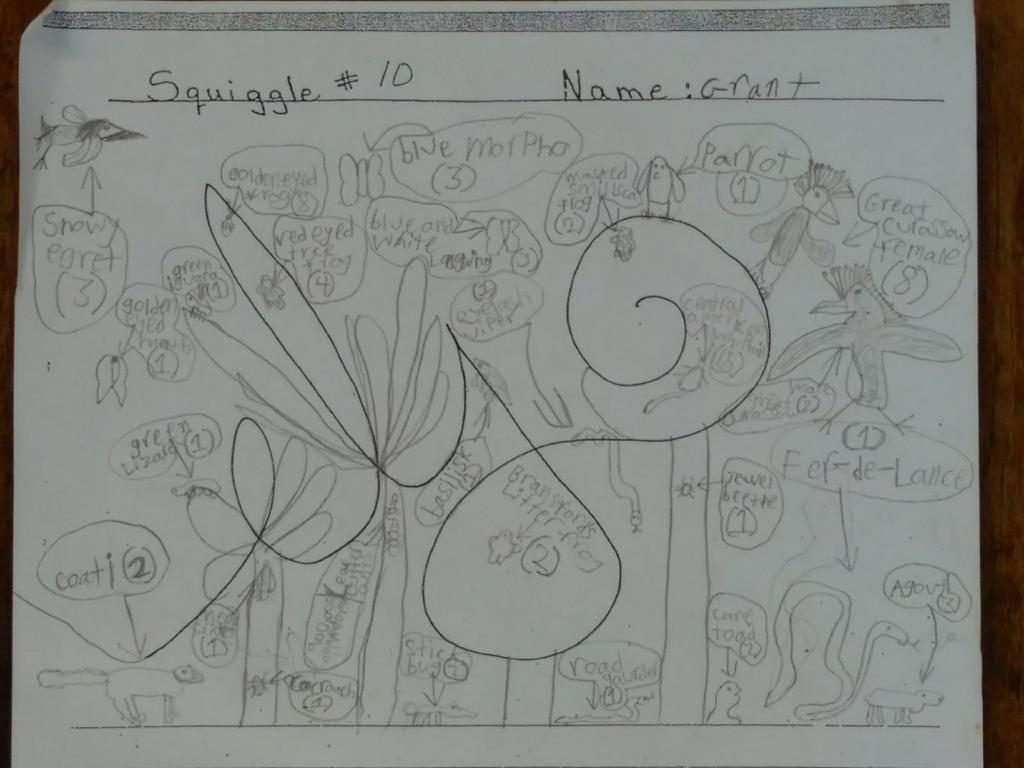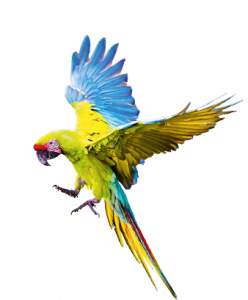From the beginning of October 2018 to the end of March 2019, I backpacked through Costa Rica and Panama in search of rainforest conservation and reforestation projects. People I met on my trip told me about Tropica Verde. That’s why I did some research and contacted Stefan Rother, who travels a lot in Costa Rica for Tropica Verde, among others, and told me about the new Kinkajou project.
I arrived at the Yatama Lodge one afternoon after an adventurous journey with the experienced driver and friendly host Pedro. Where 15 years ago there were cow pastures, the simple cabanas are now surrounded by lush secondary forest. Pedro once swapped his home in San Jose for this land and is now justifiably proud of the forest that is now growing here and the animals that have moved back in after he planted many trees. He built 60% of the cabañas, the cozy guest room and the wooden walkways in between from the wood that could be found on the cow pastures from previous deforestation.
At Reserva Kinkajou, guests can experience several hiking trails through the forest and exciting day and night tours with the host himself or his guide. After a delicious and hearty dinner, I too marveled at frogs, snakes, insects and the cute kinkajou, which gives its name to the new Tropica Verde sanctuary, on the night tours.
I regularly walked to the Reserva, which borders the Pedro area and the Braulio Carillo National Park, at 5:30 a.m. with the morning nature symphony. I was horrified to see that everything here had actually been cut down. The little green parrots screeched at sunrise on the very scattered trees and I cried. On the mostly cleared neighboring plot there is a wooden house made of the best wood, which seems to have been inhabited recently. A tiny homemade birdcage made of wire mesh and a parrot perch on which parrots with clipped wings used to live hang in front of it. It was shocking to see and the sad sight touched me deeply.
Pedro later told me that a woodcutter lived here who offered the former landowner the following: He would cut the wood, sell it and then he could buy the land and use it for farming. So he cut down everything, built himself a house, sold the wood on his own account and kept the proceeds. Unfortunately, he left behind largely devastated land, and the animals there were deprived of much of their habitat. This largely deforested but still ecologically important biocorridor site has now been placed under protection through the purchase of Tropica Verde and is now the basis for the “Reserva Kinkajou” reforestation project.
Later, I met a family from San Francisco who had also visited Reserva Kinkajou the day before. Grant, 10 years old, proudly told me that he is using his pocket money to replant forest in this area. He gets $9 pocket money from his parents: $3 to spend, $3 to save and $3 to give. He wants to use the money to save and give to replant 25 trees where they were cut down. When I asked him why he was doing this, he gave me the answer:
“So that the animals have the trees as their home again and can move from forest to forest”.
He also showed me a list of 54 animal species that he saw in Pedro’s forest in just two days and drew a picture of them. His sister Jillian, 7, added: “That the land of the animals has been destroyed and needs to be repaired.
Thanks to the insightful, far-sighted and all donors !!!
Prof. MA Dipl.-Ing. Tina Kitzing, Beuth University of Applied Sciences Berlin, Faculty: Event Technology and Management, Subject: Event Design, collected money for the rainforest in Costa Rica as a child at the school’s annual appeal for donations from neighbors. Because the donation box was always full and she had collected the most, there was a book prize and the choice was always a photo book with lots of fantastic rainforest animals. She has always been fascinated by nature and 10 years ago, when she was 40, she finally traveled to Costa Rica. When she visited the children’s rainforest (Bosque des los ninos) in Monteverde, there was a sign saying that this rainforest exists because children around the world have been collecting for it since the 1980s. This touched her deeply and since then she has actively campaigned for rainforest protection and reforestation and wants to pass this on to her students and future generations. She is now spending a semester on a research trip.
Photos: © Tina Kitzing



